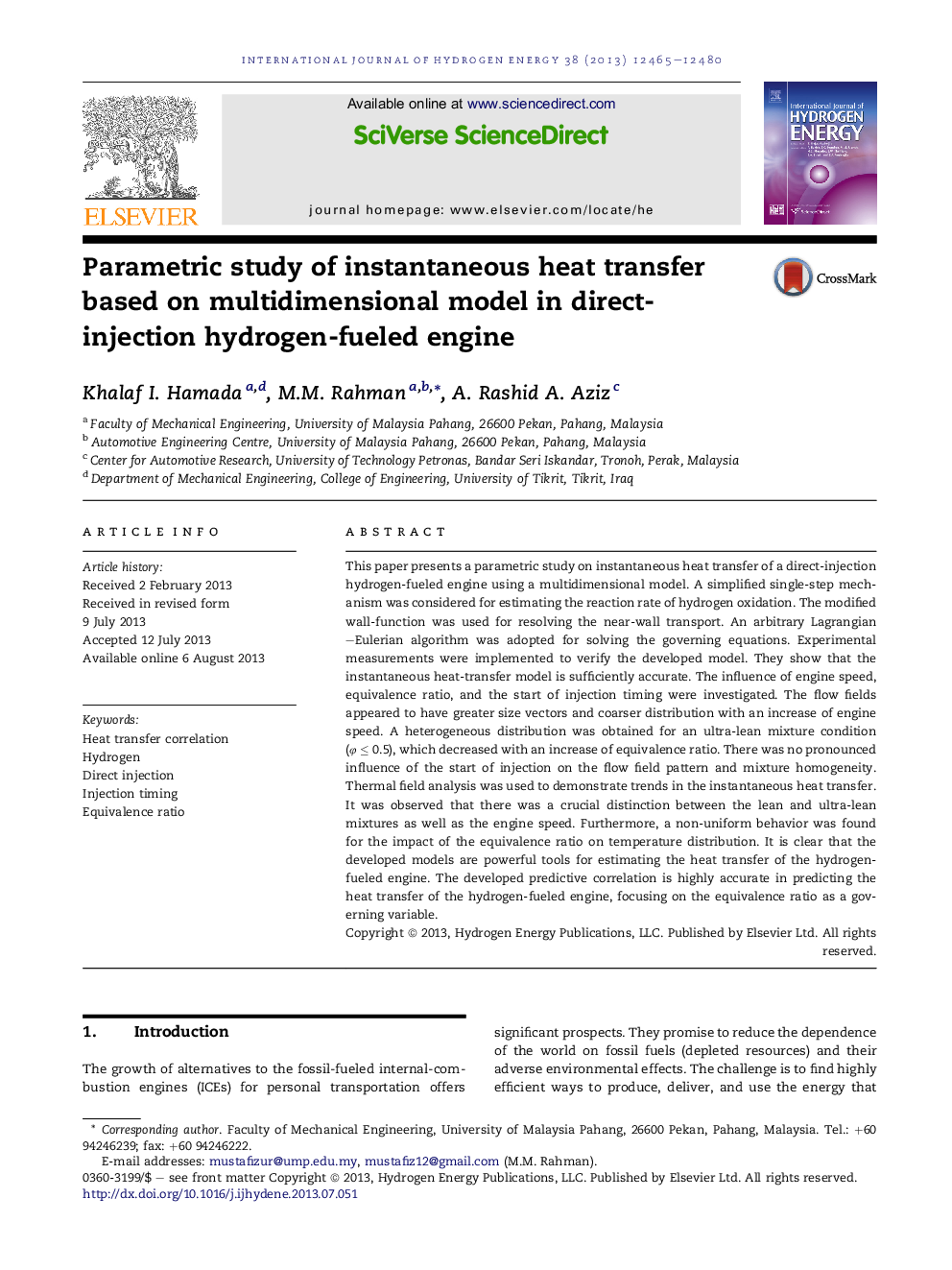| کد مقاله | کد نشریه | سال انتشار | مقاله انگلیسی | نسخه تمام متن |
|---|---|---|---|---|
| 1281475 | 1497517 | 2013 | 16 صفحه PDF | دانلود رایگان |

• The multidimensional model based on the finite volume approach.
• Experimental measurements were implemented to verify the developed model.
• The influence of engine speed and equivalence ratio were investigated.
• The parametric analysis was performed in terms of the flow field, thermal field.
• Heat release rate and cumulative heat loss have been analyzed.
This paper presents a parametric study on instantaneous heat transfer of a direct-injection hydrogen-fueled engine using a multidimensional model. A simplified single-step mechanism was considered for estimating the reaction rate of hydrogen oxidation. The modified wall-function was used for resolving the near-wall transport. An arbitrary Lagrangian–Eulerian algorithm was adopted for solving the governing equations. Experimental measurements were implemented to verify the developed model. They show that the instantaneous heat-transfer model is sufficiently accurate. The influence of engine speed, equivalence ratio, and the start of injection timing were investigated. The flow fields appeared to have greater size vectors and coarser distribution with an increase of engine speed. A heterogeneous distribution was obtained for an ultra-lean mixture condition (φ ≤ 0.5), which decreased with an increase of equivalence ratio. There was no pronounced influence of the start of injection on the flow field pattern and mixture homogeneity. Thermal field analysis was used to demonstrate trends in the instantaneous heat transfer. It was observed that there was a crucial distinction between the lean and ultra-lean mixtures as well as the engine speed. Furthermore, a non-uniform behavior was found for the impact of the equivalence ratio on temperature distribution. It is clear that the developed models are powerful tools for estimating the heat transfer of the hydrogen-fueled engine. The developed predictive correlation is highly accurate in predicting the heat transfer of the hydrogen-fueled engine, focusing on the equivalence ratio as a governing variable.
Journal: International Journal of Hydrogen Energy - Volume 38, Issue 28, 19 September 2013, Pages 12465–12480